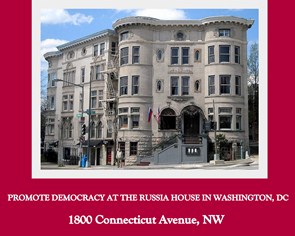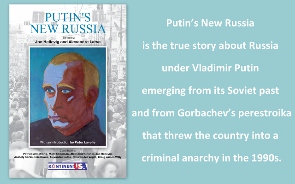
 In the past few years, in terms of basic necessities (food, clothing, housing) Russia has basically (re)converged to where the Soviet Union left off. Here is a graph of food consumption via Sergey Zhuravlev. At the bottom, the dark blue line is represents meat; the yellow, milk; the blue line, vegetables; the pink line, fish; the cyan line, fruits and berries; and azure line, sugar and sweets. At the top, the purple line are bread products, and the dark blue/green line are potatoes.
In the past few years, in terms of basic necessities (food, clothing, housing) Russia has basically (re)converged to where the Soviet Union left off. Here is a graph of food consumption via Sergey Zhuravlev. At the bottom, the dark blue line is represents meat; the yellow, milk; the blue line, vegetables; the pink line, fish; the cyan line, fruits and berries; and azure line, sugar and sweets. At the top, the purple line are bread products, and the dark blue/green line are potatoes.

Meat consumion has essentially recovered to late Soviet levels, although it still lags considerably behind Poland, Germany, and other more prosperous carnivorous cultures. Milk fell and hasn’t recovered, but that is surely because it was displaced in part by fruit juices and soft drinks (which isn’t to say that’s a good thing – but not indicative of poverty either), and the fall in sugar consumption is surely a reflection of the near doubling of fruit consumption. We also see that bread and potato consumption peaked in the 1990′s, especially in the two periods of greatest crisis – the early 1990′s, and 1998. This is what we might expect of inferior goods like bread and potatoes.

There is a broadly similar story in housing construction. The chart left shows the annual area (in m2) constructed by 1,000 people. As we can see, after holding steady from the mid 1950′s to the late 1980′s, it more than halved by the late 1990′s; since then, however, construction has recovered almost to Soviet levels, the recent crisis barely making a dint.
Note that during the Soviet period, however, there were tons of peasants migrating into the cities, whereas today the urban population is more or less stable (after having declined by about 5 million). In general, mass housing construction once it got started in the 1950′s was one of the overlooked but significant achievements of the Soviet era – this, along with population migration controls, allowed urban Russia to avoid the slums you see even in relatively rich Third World places like Mexico or Thailand today. Nonetheless, apartments were cramped, and there were long waiting lines; while prices might be high today, the rationing in the Soviet period was just as real – it just took the form of scarcity and long queues. Today a big chunk of the new construction involves knocking down and replacing the Soviet-era housing stock with better buildings.

As shown in the graph above, also compiled by Sergey Zhuravlev, Russian consumption of food products, meat, fish, milk, and fruit was by 2008 essentially equal to US and West European levels. (Consumption of tobacco and alcohol is unfortunately significantly higher). But spending on clothing, housing, furniture, healthcare, transport, holidays, and restaurants is below 50% of US levels, even after accounting for price differences. (The situation vis-a-vis Western Europe is slightly better). On the one hand, this means that whereas Russians now have full bellies, the country still lags on life’s perks and luxuries – most especially on restaurants and holidays. On the other hand, it may well presage strong growth in the years to come.

The final graph shows the housing area constructed in 2012 per 1,000 people (red, upper axis), and the total number of apartments built per 1,000 residents (green, lower axis). Much maligned Belarus emerges as the star performer, building more housing than any other country listed. Whatever one’s thoughts on Lukashenko’s rule but this along with its (surprisingly good) overall relative economic performance should give one pause before insisting on privatization and deregulation as a sine qua non of socio-economic development. Russia is second after Belarus, followed by Kazakhstan; Poland; Slovakia; Denmark; Uzbekistan (also a socialist economy albeit a very poor one); Azerbaijan; Ukraine; Hungary; Estonia; Latvia; Armenia; Bulgaria; Lithuania; Moldova; Kyrgyzstan; Tajikistan.
This is part of a long list of basic indicators on which Russia in the past few years on which Russia has either caught up with (e.g. life expectancy) or far exceeded (e.g. automobile ownership) Soviet levels.



_jpg/250px-ElbeDay1945_(NARA_ww2-121).jpg)





